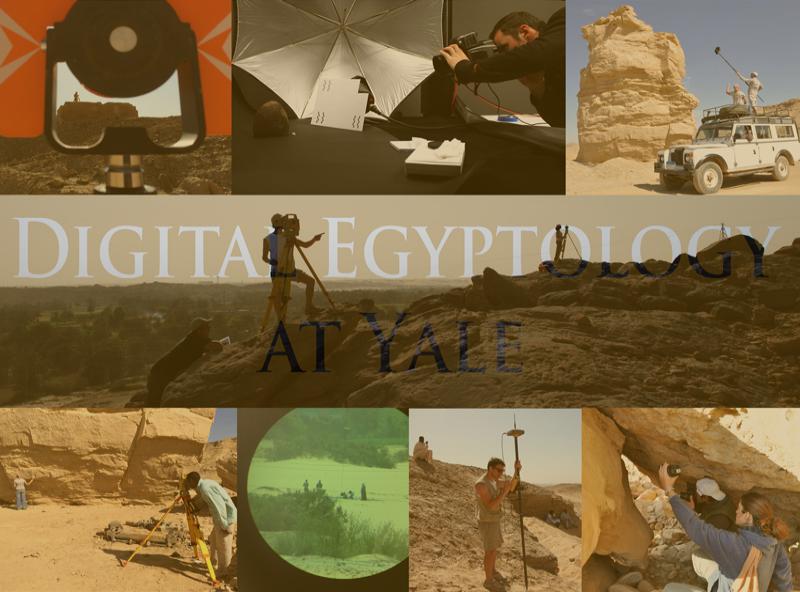Digital Egyptology at Yale
Since 2012 Yale has increasingly engaged with the application of digital technologies to support and enhance Egyptological research.
Responsible of the section: Alberto Urcia
Digital Egyptology at Yale employs a range of tools and methods to record, process, and analyze data in the field, as well as historical, epigraphic and archaeological data in other contexts (e.g. libraries, archives, and museums). 2D and 3D information are both used to enhance the documentation of objects, texts, landscapes, and architecture. In the field, we employ various devices (Total Station, digital cameras, GPS), software (Autocad, Photoscan, ArcGIS, Rhino, Photoshop), and recording techniques (photogrammetry, Structure from Motion, topographic survey) to produce analyzable data.
The workflow of Digital Egyptology at Yale, may include any or all of the following phases:
1. Consultation and project planning: preliminary evaluation of a specific research goal aimed at designing the best approach to create and support a documentation project;
2. Data acquisition: a 2D or 3D digital recording procedure applied to an original object, text, or feature in order to document its shape, location, and other characteristics;
3. Data processing: elaboration of the acquired data (RAW data) using computers to produce new datasets that can be managed and shared using specific software;
4. Data management: creation of systems based on specific software and interfaces (such as GIS) to manage the data, conduct analysis, and perform observations;
5. Layouts: conversion of data into a graphic format so that it can be digitally archived and published.

For information please contact alberto.urcia@yale.edu
